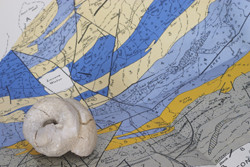A free geohazard information service for Europe
Ground instability in the urban environment can be dangerous for unprepared communities. Yet, information about geohazards and their effects can be difficult, if not impossible, to obtain. EU-funded scientists looked to Copernicus, the European Earth observation programme (formerly named Global Monitoring for Environment and Security (GMES), to generate information on natural and man-made geohazards. The 'Enabling access to geological information in support of GMES' (PANGEO)(opens in new window) project was initiated with the goal to enable free and open access to geohazard information through Copernicus. This was achieved by developing an online geohazard information service for the two largest towns in each EU Member State. With the exception of Cyprus and Luxembourg, where information is provided for one city only, the PANGEO service covers about 13 % of the EU's population. The information includes two geohazard data products: a new ground stability layer and accompanying interpretation that are produced by 27 national geological surveys. The surveys use their geohazard information in combination with measurements of terrain motion supplied by satellite interferometric synthetic aperture radars. Urban maps are supplied after integrating land-cover and land-use data from the Copernicus Land Monitoring Services. The PANGEO data can be viewed on the project website and in Google Earth. Upon user enquiry for a given town, the service automatically integrates the ground stability layer with corresponding data from the Copernicus Urban Atlas at a resolution of 2.5 metres. The PANGEO service is entirely free to use and the data products downloadable (as PDF files) to enable integration into the user's geographic information system. This wealth of information is targeted at local authorities, civil protection agencies, insurers, businesses and interested members of the general public. For example, local authority planners and regulators can now make more informed decisions on spatial planning in areas of instability. Governments can take remedial action in geologically susceptible zones to avoid high costs from possible disaster. To ensure the sustainability of the PANGEO service, additional European towns that the Urban Atlas will cover can join the online system, once all the datasets are available. A safer and more transparent EU in terms of geohazards has just begun to emerge from this ambitious project.



